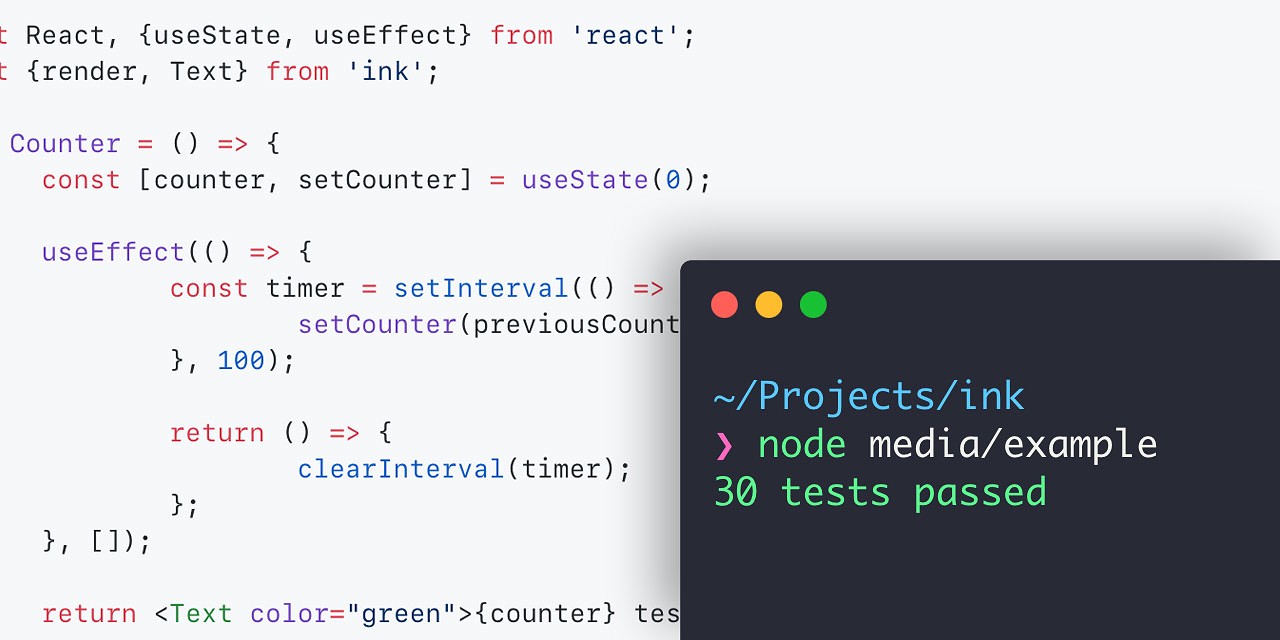#349 — July 30, 2020 |
🎉 At the end of this week's issue we have an interview with Valeri Karpov, a.k.a. The Code Barbarian. We've linked to his content quite a lot over the years and he's answered some questions about MongoDB and Mongoose for us, so don't miss that 😁 |
Node Weekly |

|
|
Ink 3 Released: Yep, You Can Build CLI Apps with React Too — If you love CLIs and you love React, you’ll love Ink – it lets you get the same component-based UI approach but at the command line. If you’re already familiar with Ink, v3.0 takes some nice steps forward. If you're totally new to it, ▶️ Harry Wolff's helpful video intro may come in handy. Vadim Demedes |
|
Node v14.7.0 (Current) Released — Another week, another release. Nothing huge here, npm upgraded to 6.14.7, plus a handful of tweaks to core libraries. Myles Borins |

Scout APM Now Available for Node.js — Scout’s intuitive UI helps you quickly track down issues so you can get back to building your product. Rest easy knowing that Scout is tracking your apps performance and hunting down small issues before they become large issues. Get started for free. Scout APM sponsor |
|
Building a Discord Bot with Node — How to create a bot from scratch for the popular chat system. You’ll use the Discord.js library, which allows users to directly interact with the Discord API. Tom X |
|
💻 Jobs |
|
Backend Engineering Position in Beautiful Norway — Passion for building fast and globally scalable APIs with GraphQL using Node.js? 😎 Join our engineering team - remote friendly. Crystallize |
|
One Application, Hundreds of Hiring Managers — Use Vettery to connect with hiring managers at startups and Fortune 500 companies. It's free for job-seekers. Vettery |
🧑💻 Interested in running a job listing in this newsletter? There's more info here.
📗 Tutorials |
|
Building Desktop Apps with Electron and Vue — In this tutorial, Timi Omoyeni explains what you need to keep in mind when building a desktop application with Vue.js using the Vue CLI Plugin Electron Builder. Timi Omoyeni |
|
Working with the Slack API in Node — Valeri covers the basics of how to send a Slack message from Node. Valeri Karpov |
|
Getting Started with Continuous Integration for Nest.js APIs — Learn how to build RESTful APIs with Nest.js, write tests for the business logic, and automate the tests using CircleCI. CircleCI sponsor |
|
Building a REST API Using Google Sheets — Not all apps need a database. Not all serverless functions need AWS Lambda or Cloudflare Workers.. This is an interesting look at using Google Cloud Run along with Google Sheets as a sort-of serverless data storage API. Tek Loon |
|
Advice to Myself When Starting Out as a Software Developer — Nothing earth shattering here, but solid advice generally. Keep reading, keep learning, figure out refactoring and testing, and teach. Gergely Orosz |
|
Working with Zip Files in Node Valeri Karpov |
🛠 Tools, Resources and Libraries |

|
|
macintosh.js: A Virtual Macintosh Running in Electron — This is kinda impressive. A working (of sorts) virtual machine, emulating a 1991 Macintosh Quadra 900 with System 8, all running in Electron. Felix Rieseberg |
|
Git 2.28 Released: A Look at What's New — Taylor Blau (GitHub) |
|
Access Your C/C++ Code from Node.js. We'll Create Your Custom Binding inspiredware sponsor |
|
SheetSQL: A Library to Use Google Sheets as a Simple Database Joway |
|
png-img 3.0: A Light Yandex |
|
AutoCannon: A Fast HTTP/1.1 Benchmarking Tool — Inspired by wrk and with support for HTTP pipelining and HTTPS. Matteo Collina |
|
Hexo 5.0: A Node Powered Blog Framework — Hexo is a mature blogging system built in Node that generates static files making it easy to deploy. 5.0.0 changelog and GitHub repo. Hexo |
|
